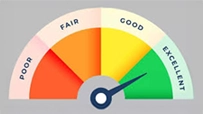Home Loan Restructuring vs. Refinancing: Choosing the Right Path for Financial Relief
Disclaimer: This blog contains generic information only. Ujjivan SFB is not responsible for the accuracy of the information provided herein. Please click 'Apply Now' to view our Home Loan products.
September 03, 2025

Amit and Ravi, two childhood friends, found themselves in similar situations but chose different paths to navigate their financial difficulties. Both had taken home loans a few years ago, but rising expenses and unexpected financial burdens left them struggling with their EMIs.
Amit, a salaried professional, started facing cash flow issues due to a temporary salary cut. He approached his bank and opted for home loan restructuring—his bank extended his loan tenure and adjusted his EMI, making it easier for him to manage his finances.
Ravi, on the other hand, decided to explore home loan refinancing. He found another bank offering a significantly lower interest rate. By transferring his loan, he not only reduced his EMI but also saved a substantial amount over time.
If you are facing a similar dilemma, understanding the difference between home loan restructuring and refinancing can help you make an informed decision.
What is Home Loan Restructuring?
Home loan restructuring is a financial relief measure offered by banks and financial institutions to borrowers who are struggling to repay their loans due to genuine financial hardships.
Key Features of Loan Restructuring
- It is usually offered to borrowers facing financial distress.
- Banks may extend the loan tenure, reduce interest rates, or grant a temporary moratorium.
- The aim is to prevent loan default while making repayments manageable.
- It may impact your credit score, as restructuring indicates financial stress.
- It is approved only after the bank assesses the borrower’s ability to repay under the new terms.
When to Consider Loan Restructuring
- If you are temporarily facing financial difficulties (e.g., job loss, salary cuts, or medical emergencies).
- If your bank is willing to negotiate new repayment terms.
- If you are struggling to keep up with your current EMIs and risk defaulting.
What is Home Loan Refinancing?
Home loan refinancing, also known as a balance transfer, involves shifting your home loan from your current bank to a new bank offering better terms. This is usually done to take advantage of lower interest rates or better loan features.
Key Features of Loan Refinancing
- It is a strategic move to lower your loan costs.
- Involves transferring your outstanding loan amount to another bank.
- Can reduce interest rates, EMIs, or both.
- May offer additional benefits like top-up loans.
- Generally, does not impact your credit score negatively unless multiple loan inquiries are made.
When to Consider Loan Refinancing
- If the new bank offers a significantly lower interest rate.
- If you want to reduce your EMI without extending the loan tenure too much.
- If your financial health has improved, making you eligible for better loan terms.
Key Differences Between Restructuring and Refinancing
| Factor | Home Loan Restructuring | Home Loan Refinancing |
| Purpose | Financial relief during hardship | Cost-saving strategy |
| Impact on EMI | Can reduce EMI by extending tenure | Can reduce EMI due to lower interest rate |
| Credit Score Impact | Possible negative impact | Usually no negative impact |
| Eligibility | Available only if the borrower is in distress | Available to borrowers with good repayment history |
| Loan Tenure Change | Usually extended | May or may not change |
| Additional Costs | Minimal processing fees | Processing fees, legal charges, and valuation costs |
Final Thoughts
If you are facing financial hardship and struggling with EMIs, loan restructuring might be a lifeline to prevent default. However, if you are financially stable but want to optimize your home loan, refinancing is a better option to save on interest payments.
Before making a decision, assess your financial situation, consult with your bank, and compare different refinancing offers to ensure you choose the best solution for your needs.
Buying a house has never been this easy! Avail Ujjivan SFB’s wide range of affordable home loan products and enjoy a hassle-free loan journey. From house purchase loan to plot loans and home improvement loans, we have it all! Alternatively, you can browse through Ujjivan SFB product suite - our wide range of financial products are designed to make your financial life better.
Disclaimer: The characters and events depicted in this blog are purely fictional. Any resemblance to real persons, living or dead, is purely coincidental. The content is intended for illustration and educational purposes only.
Disclaimer:
The contents herein are only for informational purposes and generic in nature. The content does not amount to an offer, invitation or solicitation of any kind to buy or sell, and are not intended to create any legal rights or obligations. This information is subject to updation, completion, amendment and verification without notice. The contents herein are also subject to other product-specific terms and conditions, as well as any applicable third-party terms and conditions, for which Ujjivan Small Finance Bank assumes no responsibility or liability.
Nothing contained herein is intended to constitute financial, investment, legal, tax, or any other professional advice or opinion. Please obtain professional advice before making investment or any other decisions. Any investment decisions that may be made by the you shall be at your own sole discretion, independent analysis and evaluation of the risks involved. The use of any information set out in this document is entirely at the user’s own risk. Ujjivan Small Finance Bank Limited makes no representation or warranty, express or implied, as to the accuracy and completeness for any information herein. The Bank disclaims any and all liability for any loss or damage (direct, indirect, consequential, or otherwise) incurred by you due to use of or due to investment, product application decisions made by you on the basis of the contents herein. While the information is prepared in good faith from sources deemed reliable (including public sources), the Bank disclaims any liability with respect to accuracy of information or any error or omission or any loss or damage incurred by anyone in reliance on the contents herein, in any manner whatsoever.
To know more about Ujjivan Small Finance Bank Products Visit:"https://www.ujjivansfb.in"
All intellectual property rights, including copyrights, trademarks, and other proprietary rights, pertaining to the content and materials displayed herein, belong
to Ujjivan Small Finance Bank Limited or its licensors. Unauthorised use or misuse of any intellectual property, or other content displayed herein is strictly prohibited and the same is not intended for distribution to, or use by, any person in any jurisdiction where such distribution or use would (by reason of that person’s nationality, residence or otherwise) be contrary to law or registration or would subject Ujjivan Small Finance Bank Limited or its affiliates to any licensing or registration requirements.
FAQs
1. Does home loan restructuring affect my credit score?
Yes, loan restructuring can impact your credit score negatively as it indicates financial distress. However, it is better than defaulting, which can severely damage your creditworthiness.
2. What are the main reasons to choose loan restructuring over refinancing?
Loan restructuring is ideal if you are facing temporary financial hardships like job loss, medical emergencies, or salary cuts. Refinancing is better if you want to save on interest costs.
3. Is home loan refinancing always beneficial?
Not necessarily. If the new bank's interest rate is only slightly lower, the processing fees and other charges may outweigh the benefits. Always calculate the total cost before refinancing.
4. Can I refinance my home loan if I have a poor credit score?
It can be challenging, as banks prefer borrowers with good credit scores. However, some banks may offer refinancing at higher interest rates if you have a steady income.
5. How long does the loan restructuring process take?
It depends on the bank, but it typically takes a few weeks as banks assess your financial situation before approving the restructuring request.
6. Will I need to submit fresh documents for home loan refinancing?
Yes, refinancing requires fresh documentation, including income proof, property documents, and a new loan application, similar to when you initially took the loan.
7. Can I restructure my home loan more than once?
While possible, multiple restructurings can raise red flags with banks and negatively impact your credit profile, making it harder to access credit in the future.
8. Are there prepayment charges if I refinance my home loan?
If your home loan is on a floating interest rate, there are usually no prepayment penalties. However, fixed-rate loans may have prepayment charges.
9. Can I get a top-up loan while refinancing?
Yes, many banks offer a top-up loan when you refinance, allowing you to borrow additional funds for personal or home improvement purposes.
10. What is the best way to decide between restructuring and refinancing?
Evaluate your financial stability, interest rate difference, impact on EMIs, and bank terms. If you are in distress, restructuring is better; if you want cost savings, refinancing is ideal.
Latest Blogs

APK Fraud: How One Wrong Download Could Empty Your Bank Account
May 13, 2025
Picture this. You’re sipping your evening tea when your phone rings.

Gold Loan LTV Ratio Explained (75% to 85%): What It Means for Borrowers
March 20, 2025
In June 2025, the Reserve Bank of India (RBI) introduced a significant relaxation for gold loan borrowers: the maximum Loan-to-Value (LTV) ratio for loans below ₹2.5 lakh was raised to 85%, up from the long-standing cap of 75%. Loans between ₹2.5 lakh and ₹5 lakh can now go up to 80%, while loans above ₹5 lakh continue under the 75% ceiling.

Good Debt vs Bad Debt: Learn the Difference
August 13, 2025
Every month, millions of Indians wait for the familiar debit alert, an EMI deducted from their account.

Got a Tax Refund? 5 Smart Ways to Put Your 2025 Refund to Work
August 13, 2025
For many taxpayers, there’s a unique sense of relief when a tax refund arrives.

Credit Score Not Improving? 5 Mistakes You Might Be Making
August 13, 2025
For most of us, a credit score feels like a silent judge sitting in the background of our financial lives.




